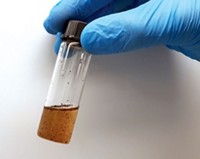Advertisement
Grab your lab coat. Let's get started
Welcome!
Welcome!
Create an account below to get 6 C&EN articles per month, receive newsletters and more - all free.
It seems this is your first time logging in online. Please enter the following information to continue.
As an ACS member you automatically get access to this site. All we need is few more details to create your reading experience.
Not you? Sign in with a different account.
Not you? Sign in with a different account.
ERROR 1
ERROR 1
ERROR 2
ERROR 2
ERROR 2
ERROR 2
ERROR 2
Password and Confirm password must match.
If you have an ACS member number, please enter it here so we can link this account to your membership. (optional)
ERROR 2
ACS values your privacy. By submitting your information, you are gaining access to C&EN and subscribing to our weekly newsletter. We use the information you provide to make your reading experience better, and we will never sell your data to third party members.
Synthesis
Solar Power Generates Methanol From CO2
Hybrid copper oxide nanorods convert sunlight to photocurrent for driving electrochemical transformations
by Mitch Jacoby
January 21, 2013
| A version of this story appeared in
Volume 91, Issue 3
Arrays of copper oxide nanowires can convert CO2 to methanol with high efficiency in a solar-powered electrochemical device, according to researchers at the University of Texas, Arlington (Chem. Commun., DOI: 10.1039/c2cc38068d). The study may lead to methods that use low-cost, Earth-abundant materials to transform CO2, a greenhouse gas, to valuable products. Texas chemists Ghazaleh Ghadimkhani, Norma Tacconi, Krishnan Rajeshwar, and coworkers used a thermal process to grow CuO nanorods and an electrodeposition method to coat the rods with crystallites of a related oxide, Cu2O. The team selected the copper oxides because of their complementary electronic properties, broad solar absorption spectra, and high electrocatalytic activity. They fashioned electrodes from the nanorods, immersed the electrodes in CO2-rich aqueous solutions, and irradiated the solutions with simulated sunlight to generate a photocurrent. Tests show that the setup quickly generates methanol with 95% electrochemical (photoelectron-transfer) efficiency. In addition, the reaction runs without the overpotential (excess energy input) required by other electrochemical systems that convert CO2 to methanol.



Join the conversation
Contact the reporter
Submit a Letter to the Editor for publication
Engage with us on Twitter